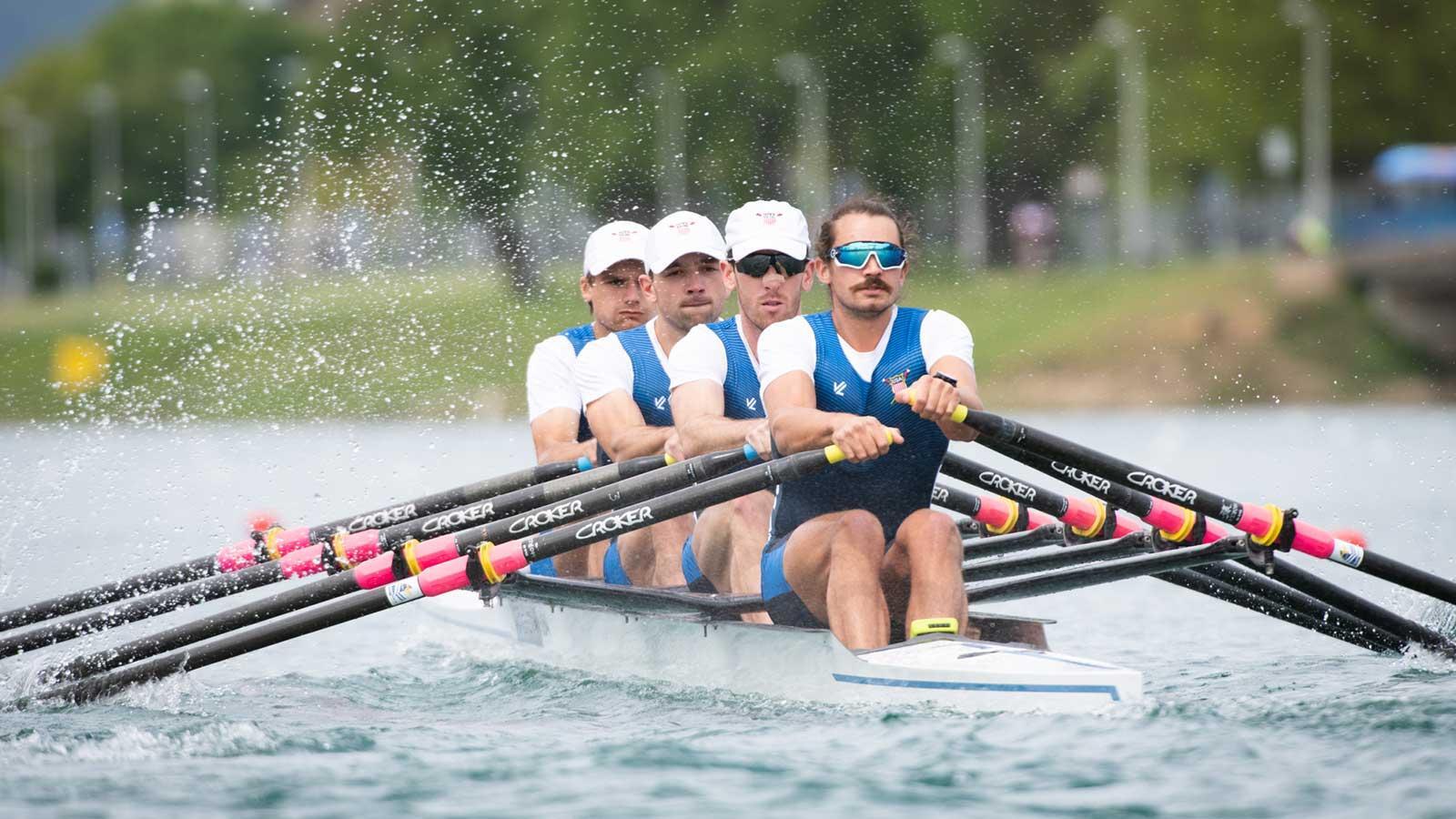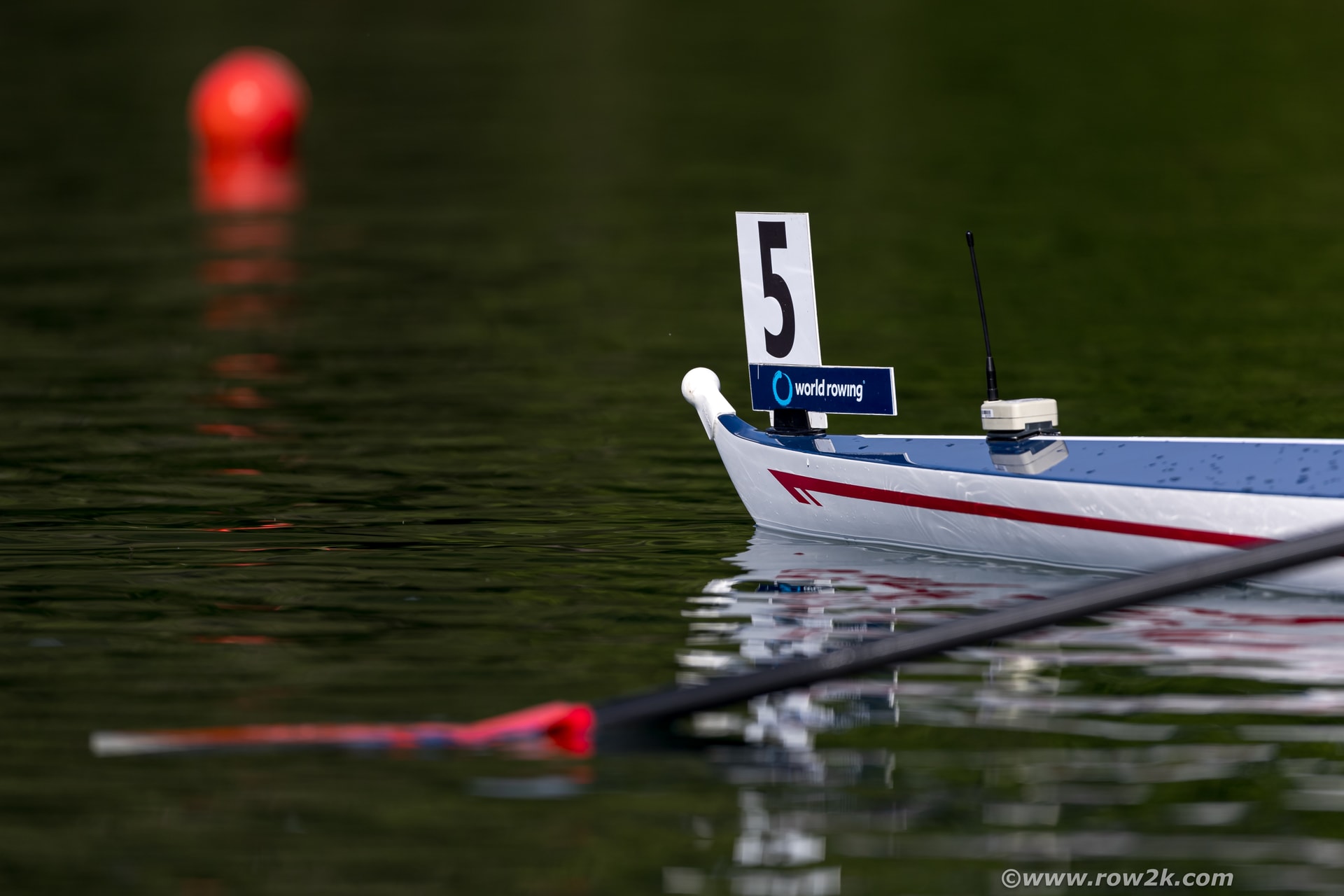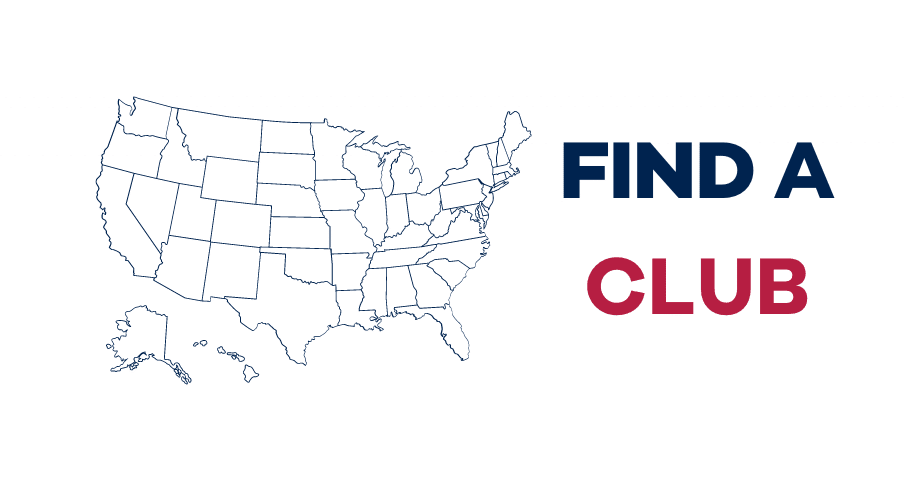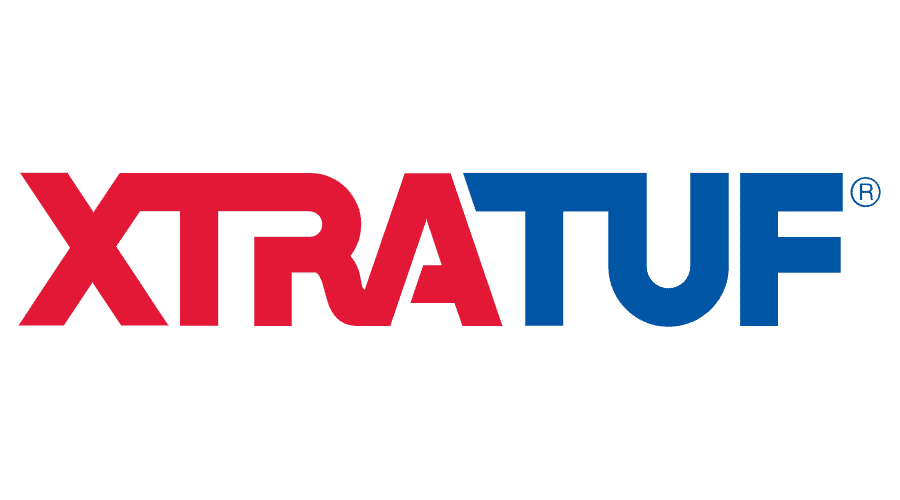Learn About Rowing

The Race
There are several different types of races divided into the three main disciplines – flat water rowing, coastal rowing, and indoor rowing.

Flat Water Rowing
There are two main seasons in flat water rowing that feature different types of races. Similar to running, the longer distance racing is in the fall (e.g., cross-country season) and the shorter races, or sprints, are held in the spring and summer (e.g., track and field season).
The Sprint Race
National, collegiate, worlds, and Olympic sprint competitions are 2,000 meters, or approximately 1.25 miles. The racecourse is divided into 6-8 lanes and each 500-meter section is marked with buoys. Masters races are typically 1,000 meters. Often, scholastic or junior races are 1,500 meters.
The race begins with all boats aligned at the start in the lanes they've been assigned. Individuals in each lane hold the stern of each boat steady while an official, known as the aligner, ensures that each boat is even with the others and squarely facing the course.
Each crew is allowed one false start; two means disqualification. If within the first 100 meters there is legitimate equipment breakage (e.g., an oar snaps in two), the race will be stopped and restarted with repaired equipment.
The stroke rate (the number of rowing strokes per minute that a crew is taking) is high at the start -- maybe 45 to even 50 for an eight; 38 to 42 for a single scull. Then, the crew will "settle" into the body of the race and drop the rating back -- 38 to 40 for an eight; 32-36 for a single. The coach and the way the race is going determine when the crew will sprint but finishing stroke rates of 46+ in the last 200 meters aren't unheard of. However, higher stroke rates are not always indicative of speed. A strong, technically talented crew may be able to cover more water faster than a less-capable crew rowing a high stroke rate.
Unlike canoe/kayak competitions, rowers are allowed to leave their lanes without penalty, so long as they do not interfere with anyone else's opportunity to win. An official follows the crews to ensure safety and fairness.
Despite the exhaustion of the race, the crew will row for several minutes afterwards in order to cool down. In rowing, the medals ceremonies often include the shells. At the world and Olympic/Paralympic level, the three medal-winning crews row to the awards dock, climb out of their shells, and receive their medals before rowing away.
The Head Race
Head races, which are generally held in the fall, are about 2.5-3 miles long and the boats are started in their respective divisions separately at perscribed intervals (usually 10-15 seconds). They are usually conducted on a river with an assortment of bridges and turns that can make passing quite interesting. The winner is the crew that had the shortest elapsed time between the start and finish lines, with any additional time included for penalties.
Coastal Rowing
Coastal rowing takes place on open water, typically on the sea or on large lakes. There are many different types of boats that race on the sea. The official World Rowing discipline was first codified in France and is now a global discipline.
There are three pathways: beach sprint, endurance, and touring.
Beach Sprint
The beach sprint format started as a result of the emergence of the beach games competitions. The first event was in Italy in 2015 at the Mediterranean Beach Games. Since then, the beach sprint format has been in Beach Games events across the world including Asia, Africa, and the Americas. The first global event was the 2019 World Rowing Beach Sprint Finals in Shenzhen, China.
The Beach Sprint format is a run, row, run combination over a 250-meter, out-and-back buoyed course. It uses a time trial and knock-out progression system. Races last between 2:30-3:30 minutes. The Venue is on swimming beaches with small waves (less than one meter), and successful rowers need running and rowing speed, agility, turning power, directional awareness, and wave-handling skills.
Endurance
The endurance format is older and started in France in the late 1980s. The first World Rowing Coastal Championships was held in 2007 in Cannes, France, and is run annually. Coastal rowing features a variety of distances. A typical course is a 4-6 kilometer course around a variable number of turning points. The starts and finishes can be either on the water or a beach depending on the location.Each race has 10-20
boats, which can mean there is interference at the first turning mark. Races take between 20-40 minutes. Successful rowers need good watership skills, endurance fitness, navigating skills, and race tactics.
Touring
Touring is of longer duration, can be multiple days, and has stops along the route. It can be either a race or a challenge and crews are often accompanied by support boats or land support. Successful rowers have ultra endurance, as well as good navigation and watership skills.
Indoor Racing
Indoor racing is typically done during the winter months and is contested on indoor rowing machines, known as ergometers. Race lengths vary from shorter one-minute or 500-meter races to traditional, flat water distances of 1,000-meters or 2,000-meters to long distance marathon races. Indoor rowing races attract on-the-water rowers, fitness rowers, CrossFIt athletes, and many others.

Education
The Launch

Safeguarding
Report a Rowing Safety Incident

Discover























